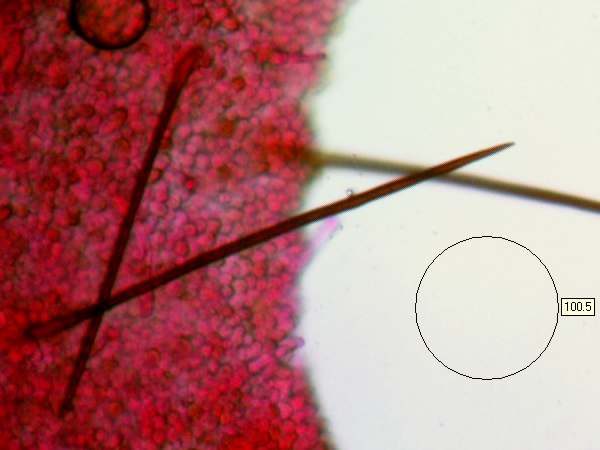Marasmius hudsonii (Pers.) Fr. - Holly Parachute
Phylum: Basidiomycota - Class: Agaricomycetes - Order: Agaricales - Family: Marasmiaceae
Distribution - Taxonomic History - Etymology - Identification - Culinary Notes - Reference Sources
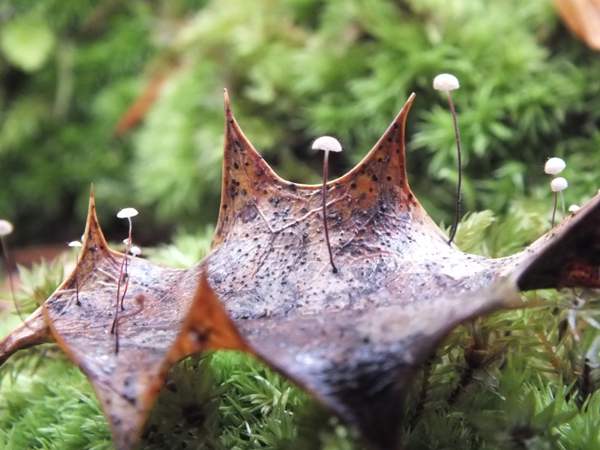
Marasmius hudsonii is a rare find, but that may well be due to its unusual habitat of moist dead holly leaves, its diminutive size – usually no more than 5mm in cap diameter and often less than half that size - together with its solitary rather than gregarius occurrence. You can find these distinctive little mushrooms in hedgerows as well as in woodlands.
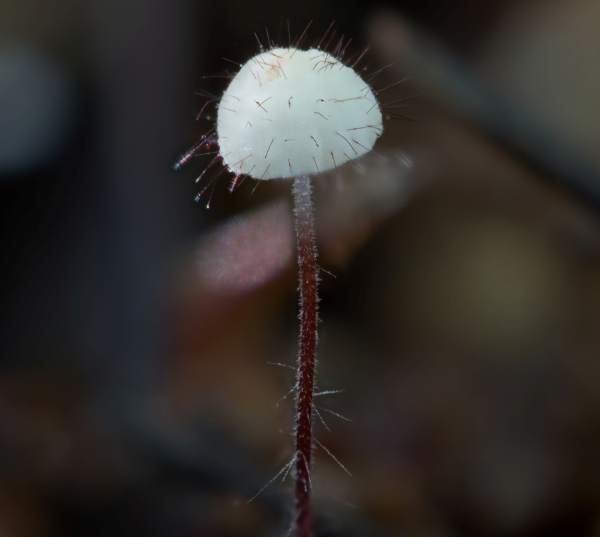
Distribution
Widespread throughout Britain and Ireland but only recorded very occasionally, Marasmius hudsonii occurs in many parts of mainland Europe, where it is a rare find. The Holly Parachute is found also in some parts of North America.
Taxonomic history
This mushroom was described in 1801 by Christiaan Hendrik Persoon, who named it Agaricus hudsonii. The Collared Parachute was redescribed by the great Swedish mycologist Elias Magnus Fries in his Epicrisis Systematis Mycologici (1838) at which time he transferred this little mushroom to the Marasmius genus.
Synonyms of Marasmius hudsonii include Agaricus pilosus Huds., Agaricus hudsonii Pers., Mycena hudsonii (Pers.) Gray and Androsaceus hudsonii (Pers.) Pat.
Etymology
The genus name Marasmius comes from the Greek word marasmos, meaning 'drying out'. Elias Magnus Fries, who separated the Marasmius genus from the similar white-spored Collybia fungi, used as a key differentiating factor the ability of Marasmius mushrooms to recover if rehydrated after drying out. Fries called this drought survival characteristic 'marescence'.
The specific epithet hudsonii honours English naturalist William Hudson (1730 - 1793).
Identification guide
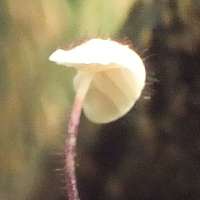 |
CapPale pinkish cream and 2-6mm in diameter, the caps of Marasmius hudsonii are convex initially, flattening at maturity. The upper surface is covered in erect bristle-like red-brown hairs (setae). |
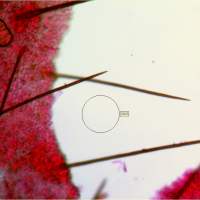 |
SetaeAbundant on cap and stem, typically 400µm long and 10µm diameter at the base, tapering to a sharp point. |
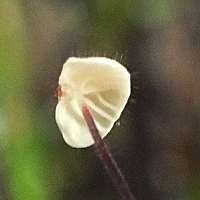 |
GillsThe very distant gills of the Holly Parachute are often veil-like or occasionlly rudimentary or even absent altogether; pinkish-white turning ochre when old. StemThe upper stem is concolorous with cap, becoming darker brown towards the base; 0.3 to 0.5mm diameter and 1 to 4.5cm long, sparsely covered in erect red-brown hairs. There is no stem ring. |
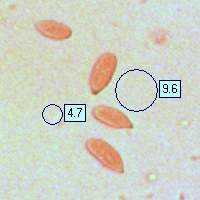 |
SporesEllipsoidal to pip-shaped, smooth, 8-13 x 4-6.5μm; hyaline. Spore printWhite. |
Odour/taste |
Not distinctive. |
Habitat & Ecological role |
Saprobic, on dead leaves of Ilex (holly) species. |
Season |
Summer and autumn in Britain and Ireland. |
Similar species |
The habitat (holly leaves) and conspicuous red-brown hairs on cap and stem of this tiny mushroom mean that it cannot easily be mistaken for any other species. |
Culinary Notes
The Holly Parachute mushroom is so diminutive and insubstantial that any attempt to make even a mushroom morsel never mind a meal would be quite ludicrous.
Reference Sources
Fascinated by Fungi, 2nd Edition, Pat O'Reilly 2016, reprinted by Coch-y-bonddu Books in 2022.
British Mycological Society (2010). English Names for Fungi
Dictionary of the Fungi; Paul M. Kirk, Paul F. Cannon, David W. Minter and J. A. Stalpers; CABI, 2008
Taxonomic history and synonym information on these pages is drawn from many sources but in particular from the British Mycological Society's GB Checklist of Fungi.
Acknowledgements
This page includes pictures kindly contributed by David Kelly.
Fascinated by Fungi. Back by popular demand, Pat O'Reilly's best-selling 450-page hardback book is available now. The latest second edition was republished with a sparkling new cover design in September 2022 by Coch-y-Bonddu Books. Full details and copies are available from the publisher's online bookshop...
